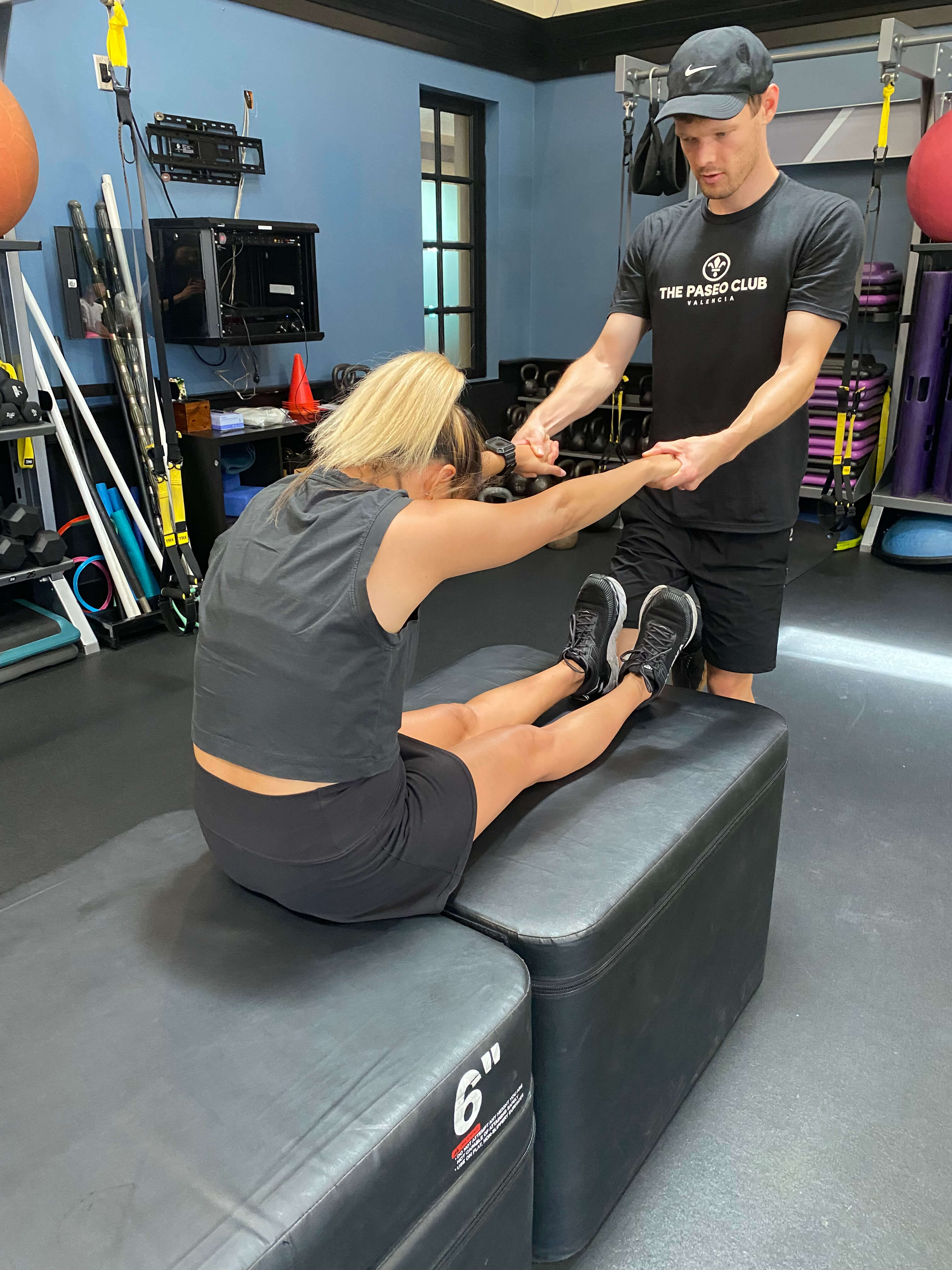Why assisted stretching is the new essential tool for your health — 8 Benefits
July 19th, 2024 | 5 min. read
By Jen Azevedo

More and more, humans are a sedentary bunch, often sitting at desks for eight hours a day. If people dedicate themselves to consistent exercise, following the eight hours of stillness, there is one hour of (sometimes frantic) movement.
We need a middle ground. We need to find time not to be still and not to be training at full intensity, yet that is the most common dynamic. When we go from zero to 100, we often miss out on several key aspects — how to develop a healthy range of motion, bring symmetry to our bodies, and reduce tension in “stuck” areas.
 Although the tennis game, the HIIT class, and the weight lifting in the gym get all the fame and glory, developing a mobility program is just as important to your health and fitness.
Although the tennis game, the HIIT class, and the weight lifting in the gym get all the fame and glory, developing a mobility program is just as important to your health and fitness.
Making time to stretch and mobilize can be challenging to do independently. Yet, everyone needs to stretch, regardless of age, size, gender, or athletic ability. Maybe you are part of that minority that stretches, but you still struggle with lingering tension in your shoulders, hamstrings, or hips.
The Paseo Club is a social club in the Santa Clarita Valley that offers fitness, social, and health resources for people of all ages and abilities. Certified trainer and assisted stretching professional Daniel Peterson-Beliakoff is bringing to the club a new and effective tool for your mobilization and recovery program — assisted stretching.
In this article, you will learn what types of stretching there are, what assisted stretching is, its benefits, and what an assisted stretching session looks like.
 What types of stretching are there?
What types of stretching are there?
There are four forms of stretching.
Passive stretching is when the body is inactive and uses an external force to assist the stretch. The force can be the floor, gravity, or another person.
Active stretching is the process of contracting opposing muscles to stretch as far as you can using the force of your body. It is a form of stretching that uses no tools, force, or props.
Static stretching is where the person holds the stretch position.
Dynamic stretching is the opposite of static stretching. It occurs when you travel to and away from two or more positions.
 What is assisted stretching?
What is assisted stretching?
Assisted stretching is the process of stretching your body with the assistance and expertise of a trained professional. Sessions with a practitioner expand your range of motion (ROM) and increase flexibility into an optimal range. It is primarily a form of passive stretching, but may involve active participation from the client depending on the client's needs.
The practitioner assesses your current abilities and then tailors a session, or multiple sessions, according to your specific needs. Assisted stretching helps you stretch further and deeper than what can be accomplished on your own.
What are the 8 benefits of assisted stretching?
There are several benefits to receiving assisted stretching:
1. Reduces stress
Assisted stretching brings more flexibility and fluidity to your body. This lessens tension and pain, allowing your body to relax. Because your body and mind are connected, your mind also relaxes, thus reducing stress. Assisted stretching is a healthy and natural tool for stress management.
2. Minimizes injury
Limited range of motion often leads to overcompensating in other areas of your body. Inflexible muscles tire more easily, causing other muscles to overcompensate. This issue increases the chance of muscular and joint injuries.
 3. Improves sleep quality
3. Improves sleep quality
A body with less tightness and discomfort is a body that can rest deeply and soundly. Assisted stretching will help you feel well-rested in the morning and more energetic throughout the day.
4. Reduces pain and tension
The most significant difference you will notice from receiving assisted stretching is that your body feels better. It is looser, more relaxed, and can move with greater ease and comfort. You will have less pain and overall tightness.
5. Improves athletic performance
A more mobile body is a body that functions better as a unit. Assisted stretching helps to improve agility, endurance, and efficiency in various physical activities. This improvement benefits lifelong and competitive athletes.
6. Learn stretching plans to do at home
Your practitioner can develop a plan that will include stretches you can do on your own at home or in the gym. This will help you maintain the flexibility you achieved through your practitioner’s treatment.
 7. Improve muscle and mobility symmetry
7. Improve muscle and mobility symmetry
It is not unusual to have muscle imbalances — especially from playing certain sports such as tennis. Often one side of the body — ankle, hip, shoulder, etc. — is tighter and has reduced flexibility. This can cause other areas to compensate, creating further imbalances. Assisted stretching can target these specific areas to help bring your body back into balance.
8. Increases range of motion and flexibility
A practitioner can help gently apply pressure, isolating specific muscles, allowing your body to stretch deeper and more effectively than stretching on your own. This is particularly helpful when recovering from an injury.
Who can benefit from assisted stretching?
Almost everyone!
- Young athletes need assisted stretching to help them stay in their best shape for workouts and competitions.
- Seniors naturally have decreased mobility and muscle strength, which makes them prime candidates for assisted stretching.
- Busy parents can benefit from extra support to help them have a great game on the courts, an awesome workout, or to release some of the stress of daily life.
There are a few people who should not participate in active stretching or should consult with their health provider.
This includes people with these conditions: pregnancy, osteoarthritis, rheumatoid arthritis, hypertension, neuromuscular disorders, joint replacements, fibromyalgia, Marfan syndrome, acute injury or muscle strain or tear, recent musculoskeletal surgery or treatment (i.e., shoulder dislocations, ligament repairs, or fractures), and osteoporosis.
 What does an assisted stretching session with a trained professional look like?
What does an assisted stretching session with a trained professional look like?
When you meet with a trained professional who provides assisted stretching, this is what you can expect:
An initial assessment will help the practitioner evaluate your body and develop a stretching program.
An assisted stretching session can last 15-60 minutes, depending on your preference. After your evaluation, you will be gently moved and stretched in the areas most needed. Longer sessions allow more areas to be addressed, providing a more comprehensive experience.
After the stretching session is complete, your practitioner can make recommendations of stretches you can do on your own, weights and conditioning for training, and ergonomic adjustments to implement in daily life.
What do people have to say about their experience with assisted stretching?
These testimonials come from pro players and instructors. They saw certified professional trainer and assisted stretching practitioner, Daniel Peterson-Baliakoff of the Paseo Club.
“Daniel's stretching is amazing! He explains everything really well and makes sure the level of flexibility is suited for all types of people. His attention to proper form and technique helps prevent injuries while maximizing the benefits of each stretch. Daniel's positive attitude and encouragement make the session enjoyable and motivating. After each session, I always feel more flexible and relaxed.”
-Tyler Shaffer, Pickleball Director
"As a tennis player and coach, my body is put through a lot of strain from the repetitive motions. I went to Daniel for elbow problems I had for a long time, and he helped me gain mobility and relieved the pain in my elbow. Daniel was very friendly and knowledgeable about how a tennis athlete’s body is connected. I would highly recommend all athletes to try Daniel out."
-Marcel Contin, (USTA 4.5) Tennis Instructor
"I really enjoyed the assistant stretching. After the stretch, I felt refreshed, and my hip felt new — especially since I am having hip problems. I have had assist stretching before, but I never felt this good after Daniel worked on me."
- Jackie Lange, (USTA 5.0) Tennis Instructor
 How do you sign up for an assisted stretching session at the Paseo Club?
How do you sign up for an assisted stretching session at the Paseo Club?
Daniel Peterson-Beliakoff is a personal trainer and assisted stretching practitioner at the Paseo Club. Daniel graduated from California State University-Northridge in psychology and philosophy and is a former researcher at the David Geffen Medical School of UCLA.
Daniel’s interests are in the philosophy of mind and the mind-body connection. He works with clients of all different backgrounds. His holistic approach leads to greater outcomes in his clients’ lives and on the court or in the gym.
Contact Daniel to learn more about assisted stretching or to book a session. Pricing varies according to the purchase package.
- 15-minute sessions $26.75-33
- 30-minute sessions $42.50-55
- 60-minute sessions $85-99
The Paseo Club offers over 60 fitness classes each week, plus small group and personal training sessions with certified instructors.
If you love the courts, then check out our tennis and pickleball programs. There is drop-in play, drills, leagues, and tournaments for people of all levels of experience.
After an assisted stretching session, come for a dip in the pool, relax at the cafe, or visit with other members over drinks at the clubhouse. There are dozens of ways to enjoy the Paseo Club. Join now and let the fun begin!
Jen Azevedo is a tennis professional, pickleball professional, personal trainer, group exercise instructor, and the general manager of the Paseo Club. She loves the community at the Paseo Club and that it is also a safe and fun place for her daughter. Jen’s favorite activities are joining her tribe for trail races or her partners for tennis matches. Occasionally Jen slows down to relax with a book — she reads over 100 a year!

